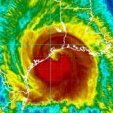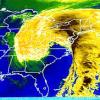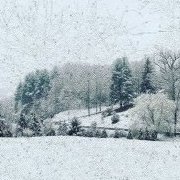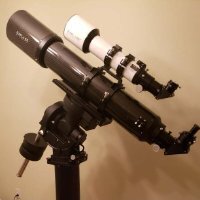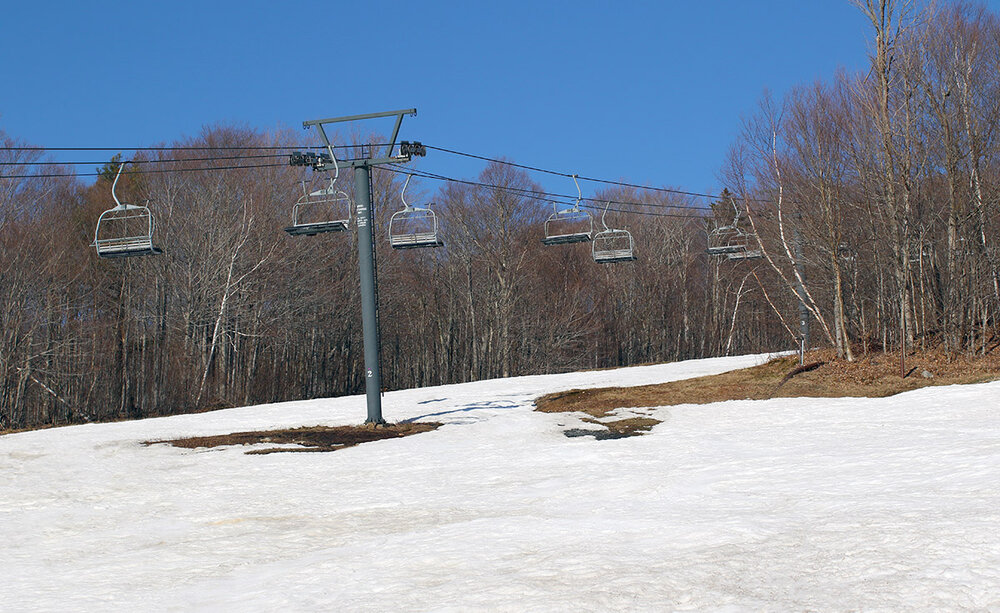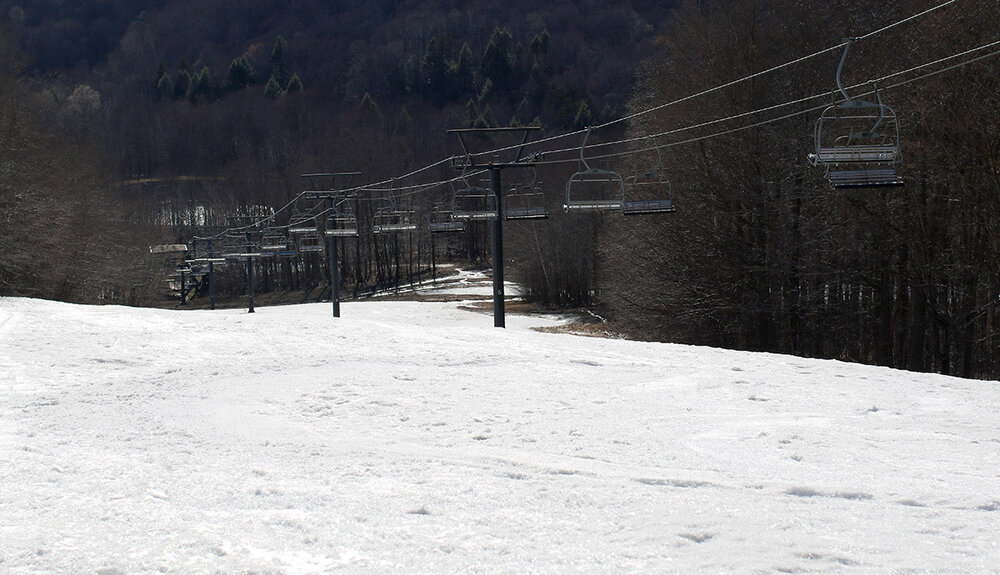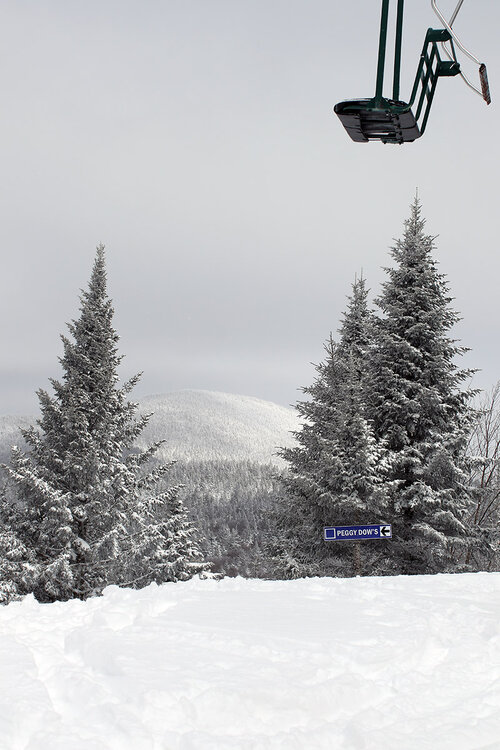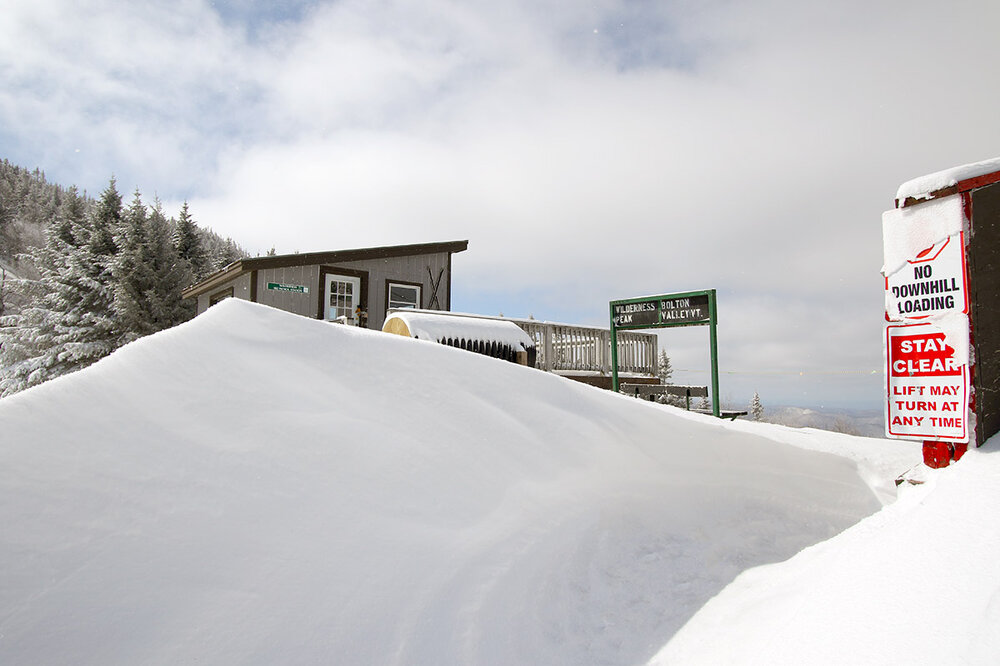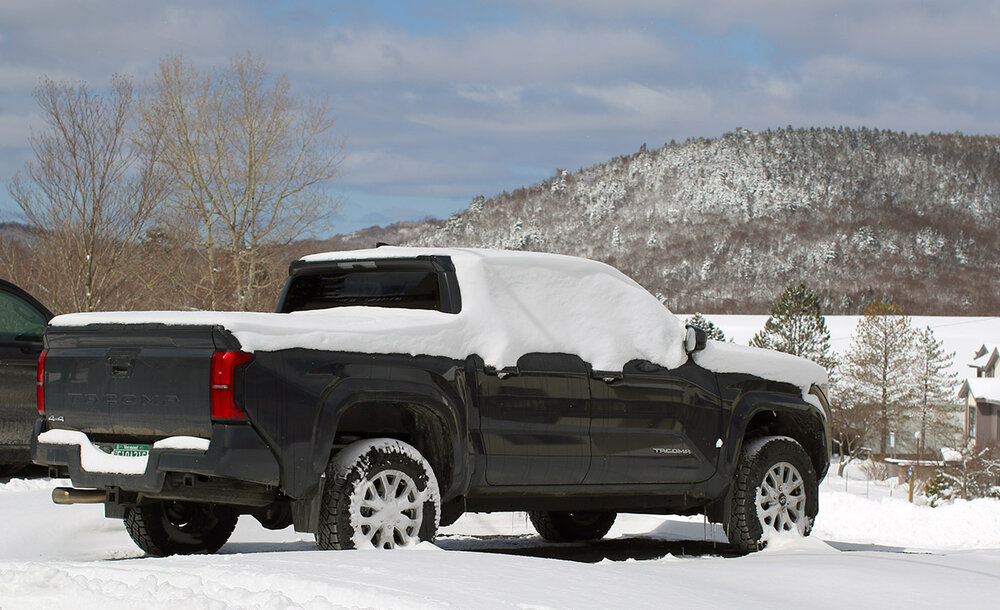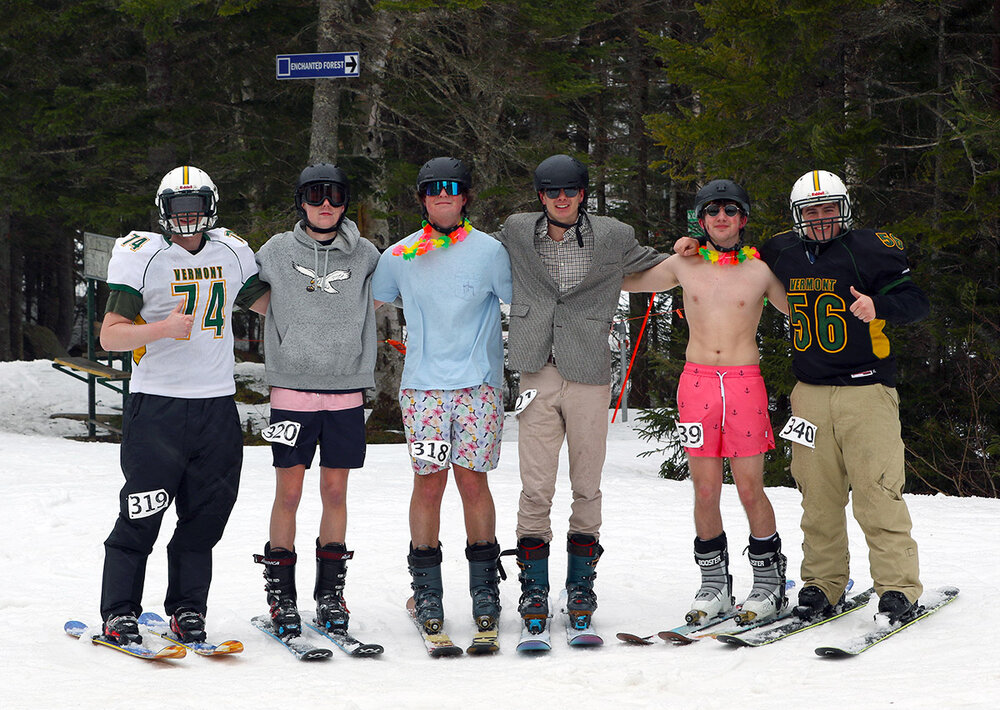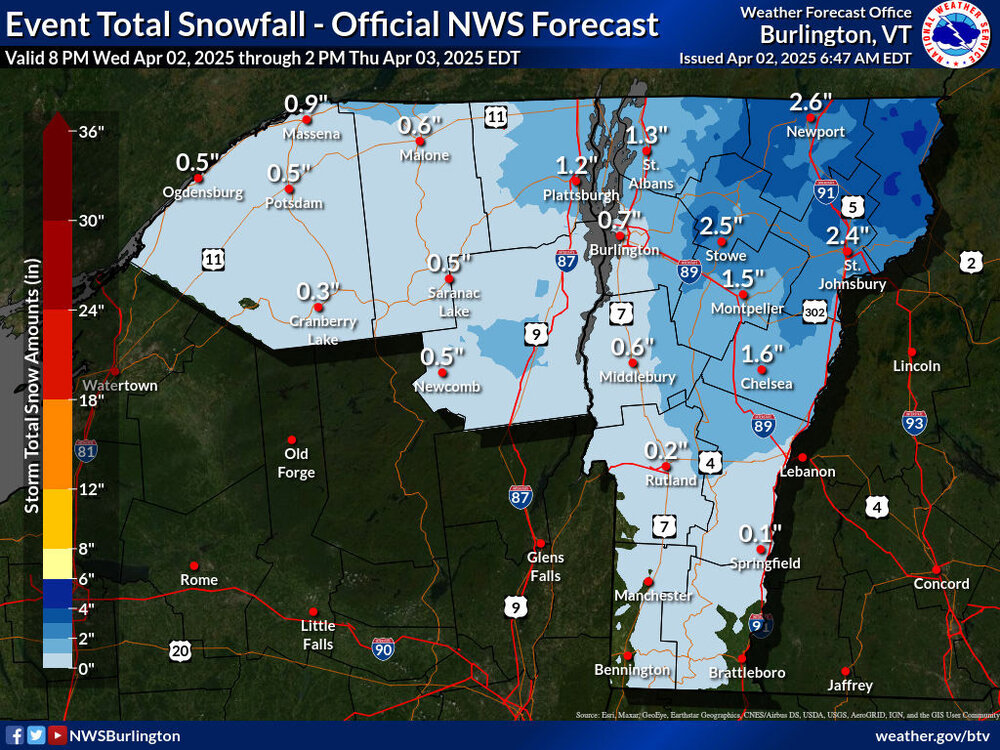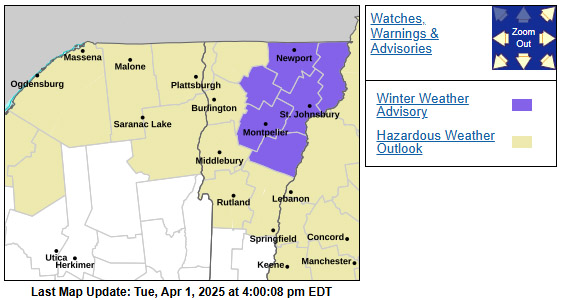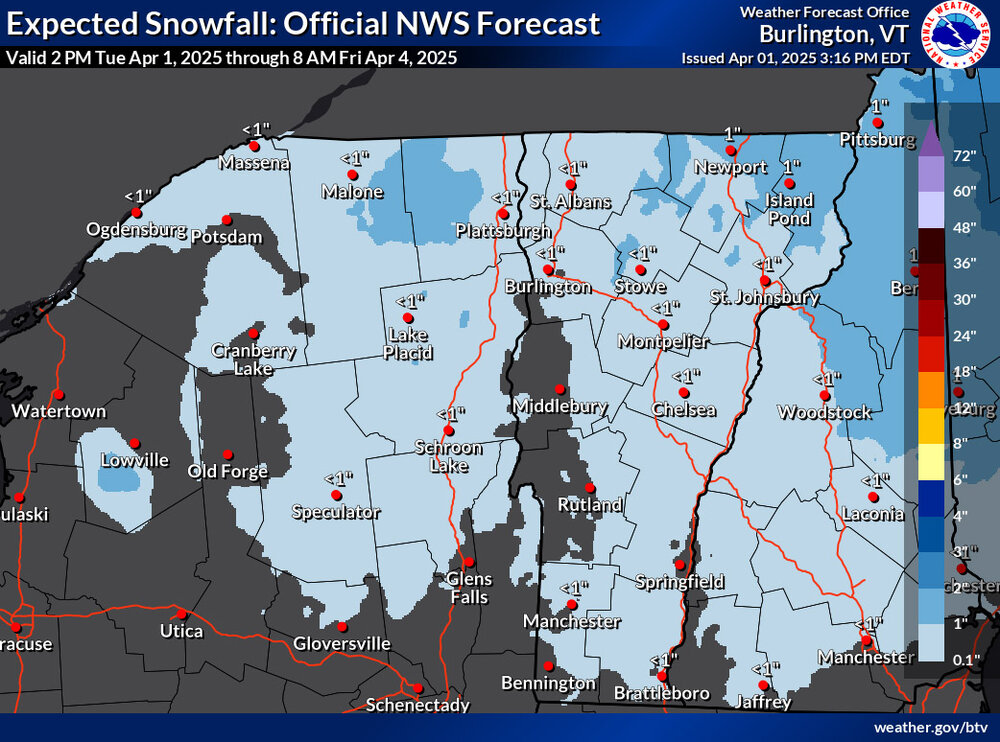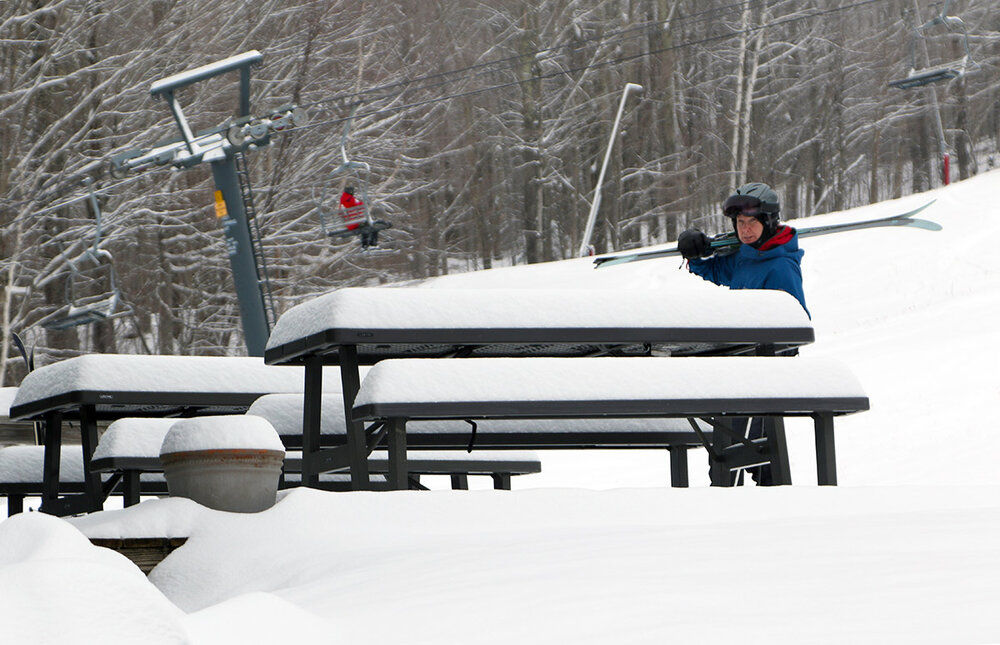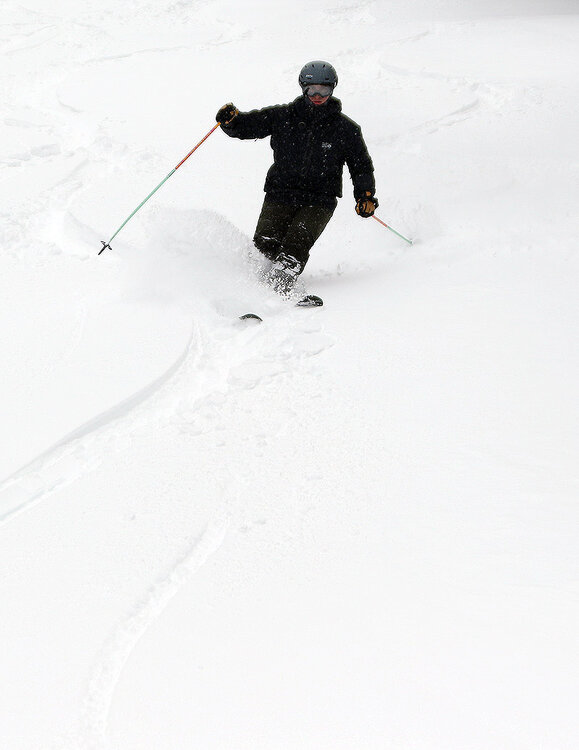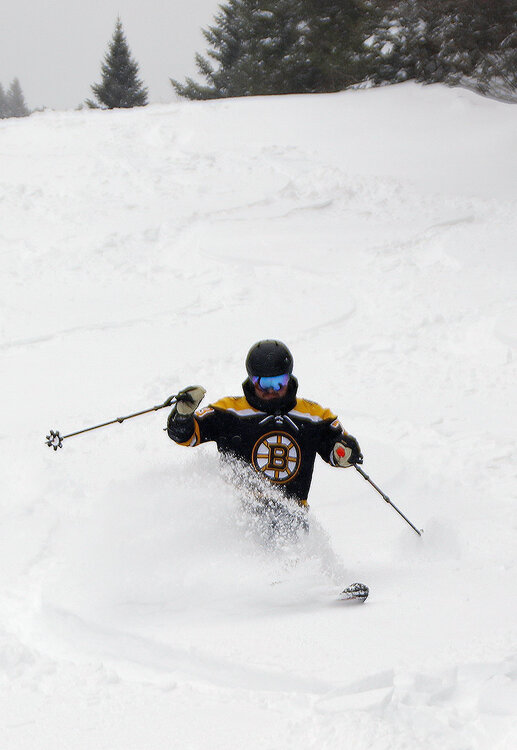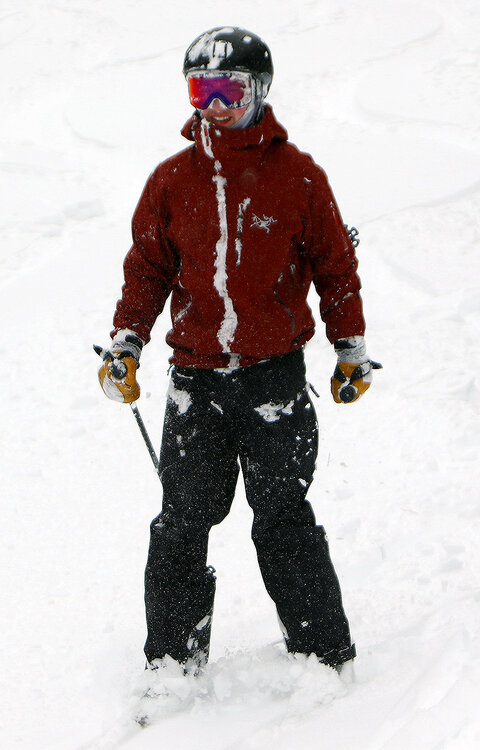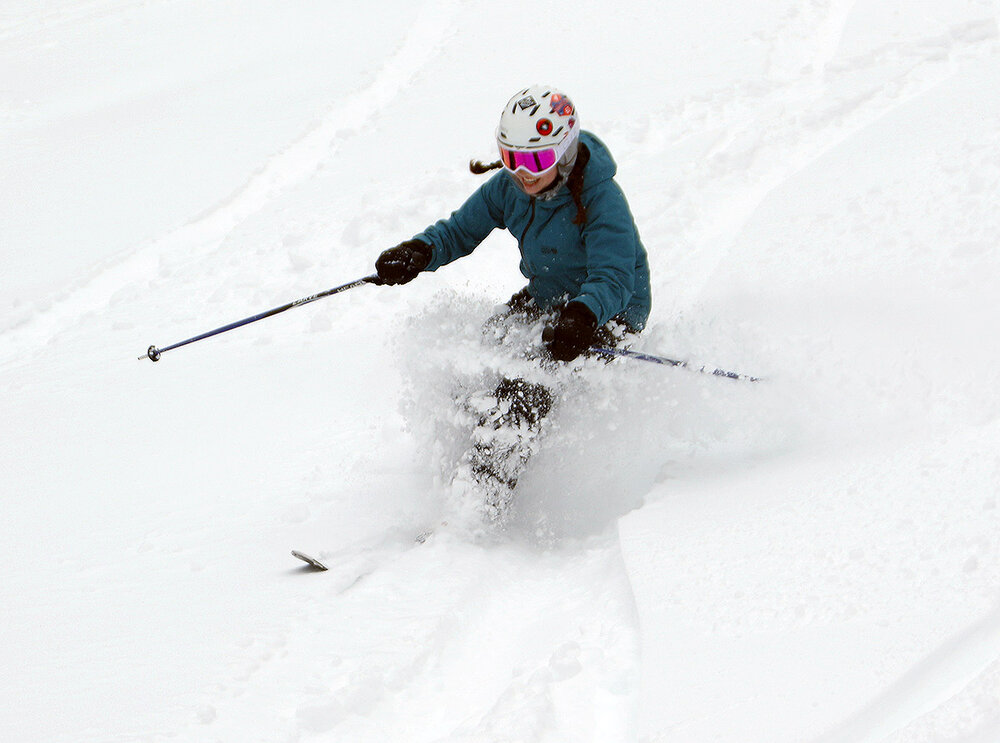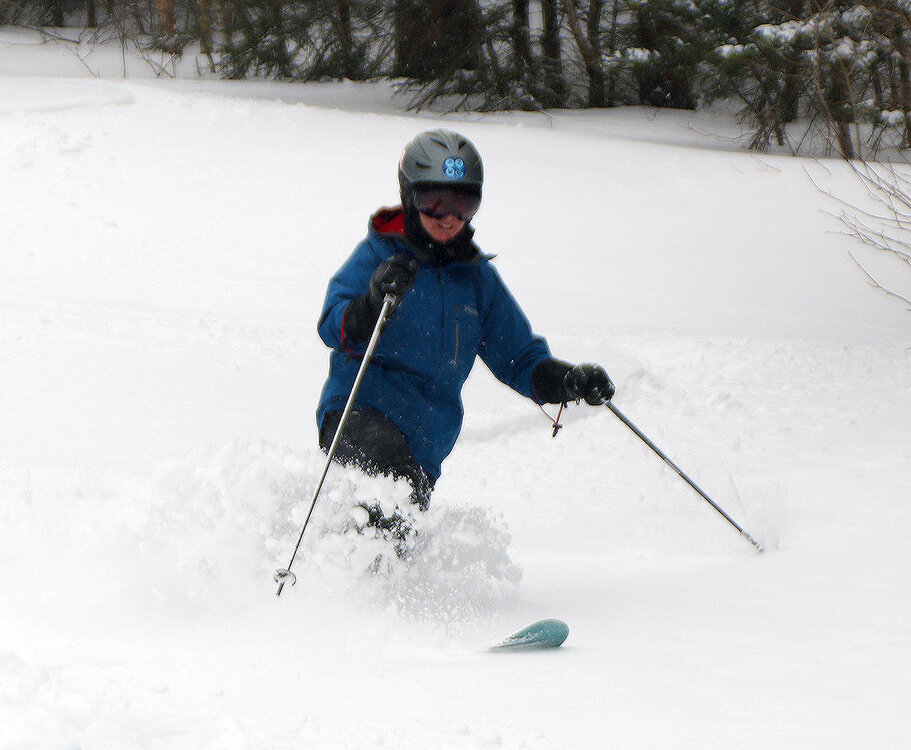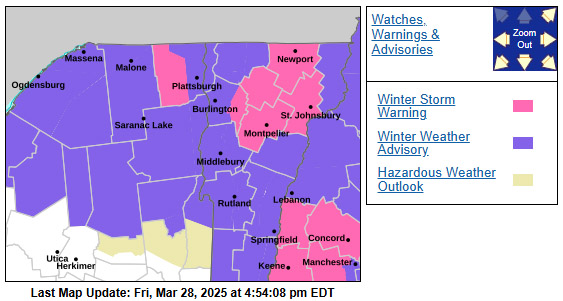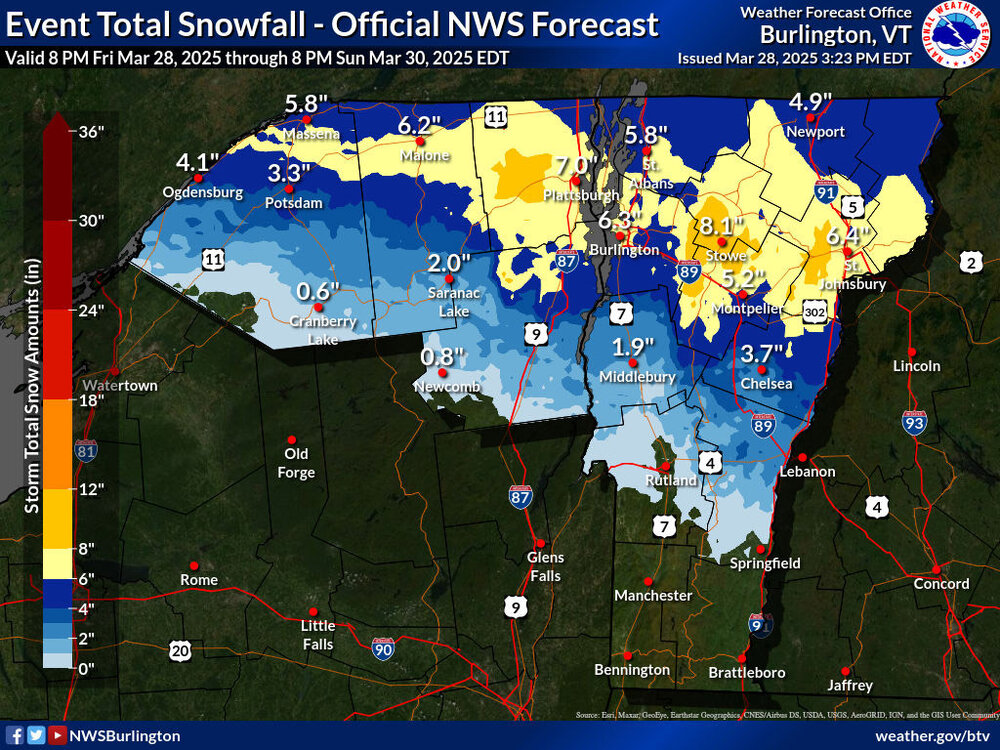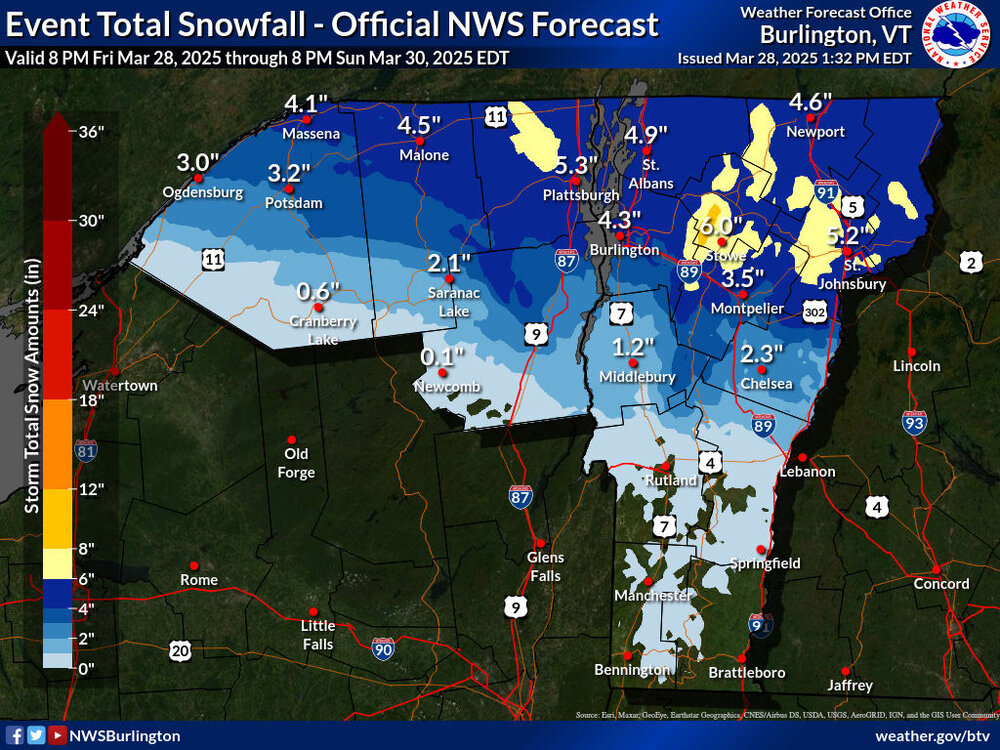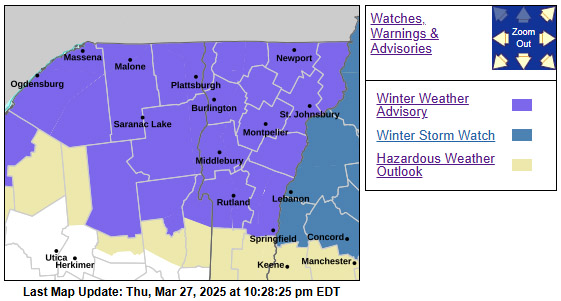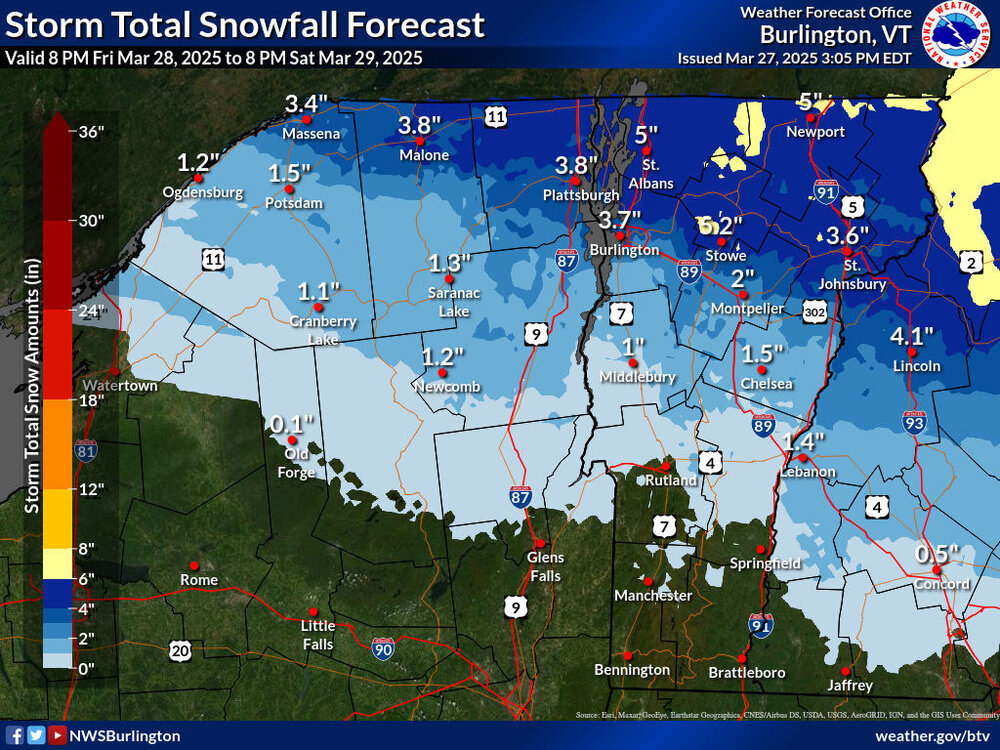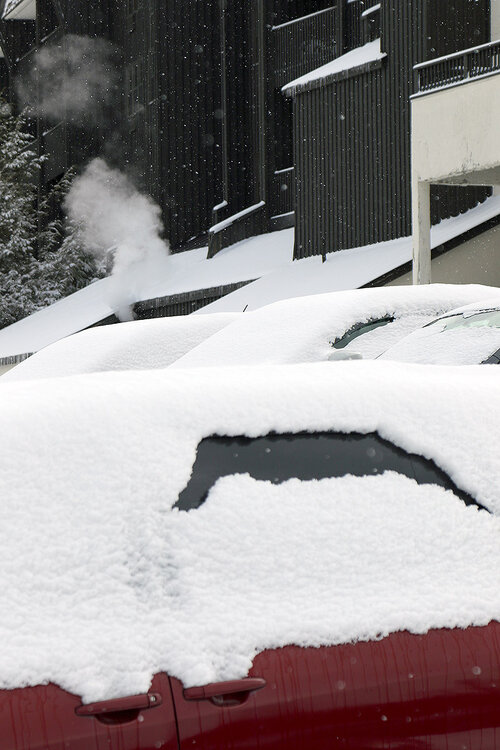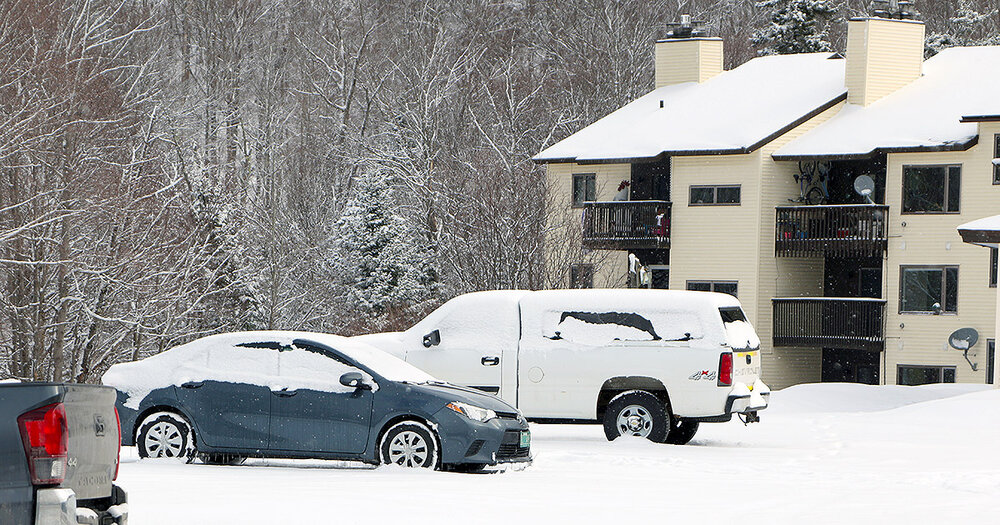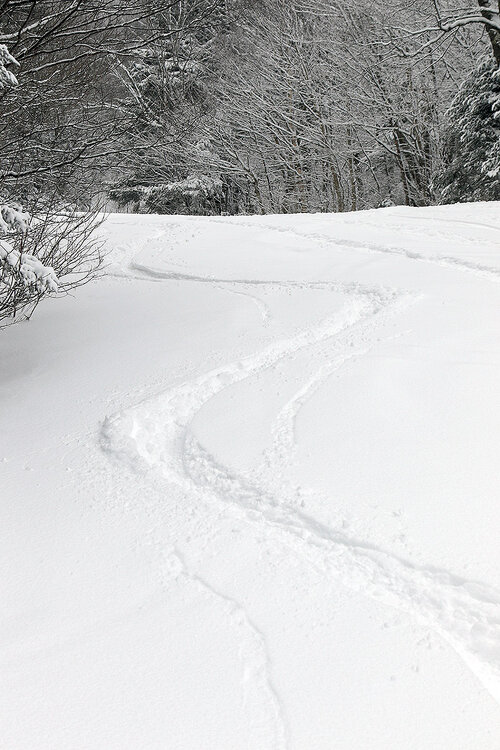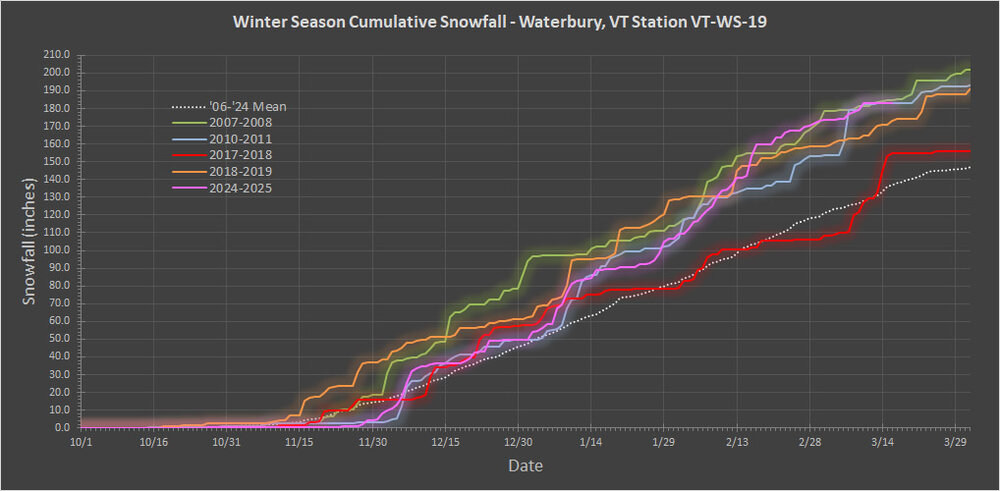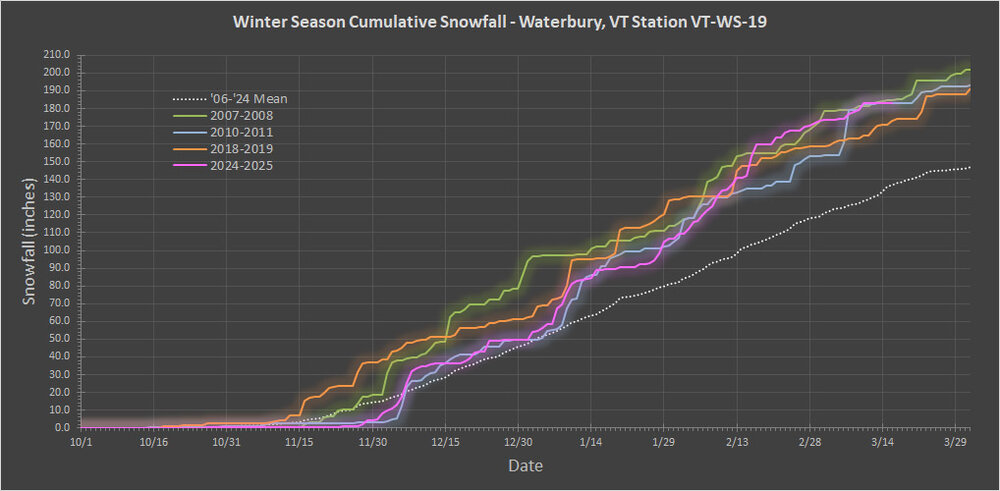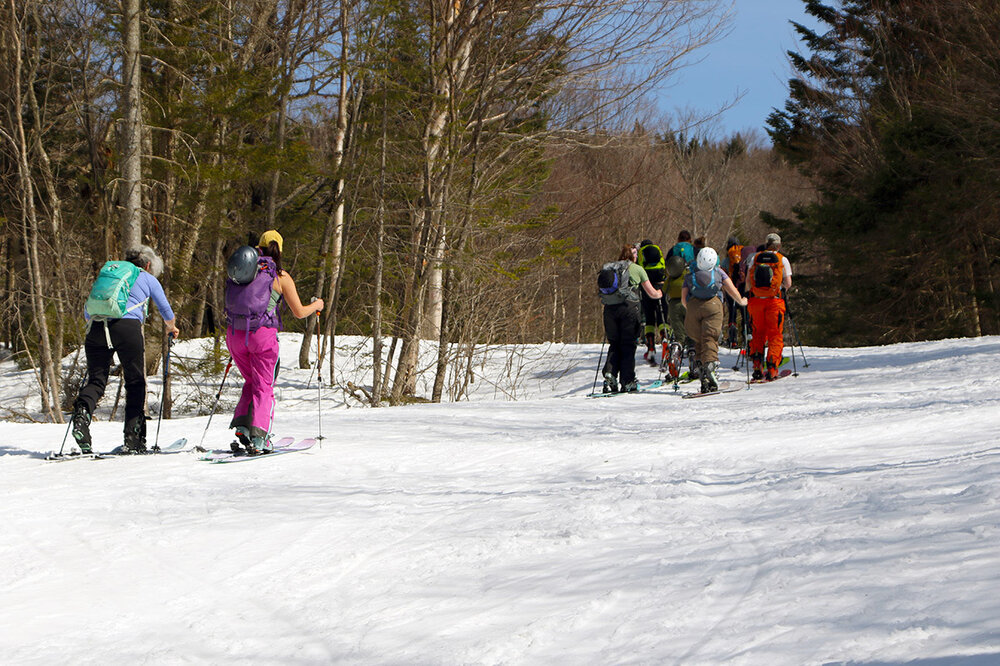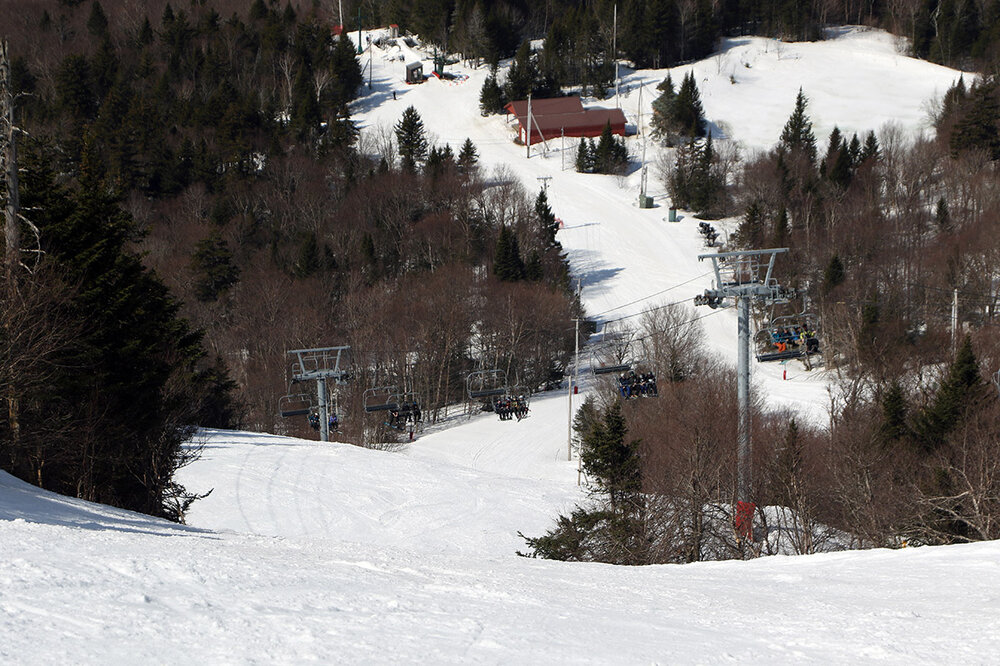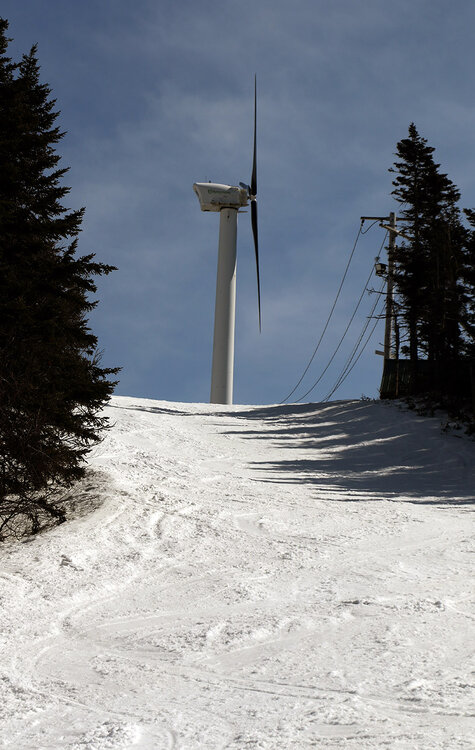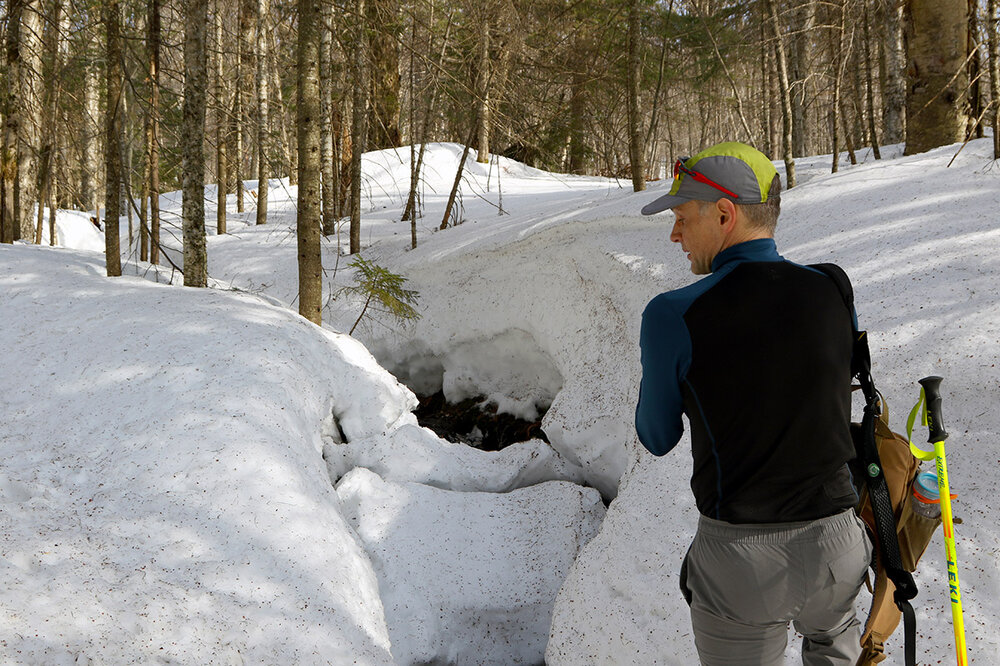-
Posts
6,297 -
Joined
-
Last visited
About J.Spin

Contact Methods
-
Website URL
http://www.JandEproductions.com
Profile Information
-
Four Letter Airport Code For Weather Obs (Such as KDCA)
KMPV
-
Gender
Male
-
Location:
Waterbury, VT
-
Interests
Skiing, Snow, Snowboarding, Outdoors, Winter Weather, Photography
Recent Profile Visitors
8,104 profile views
-
Yesterday was relatively warm with temperatures in the 60s F, but it was cloudy with on and off showers and even some rubles of thunder. Today the temperatures cooled back down into the 40s F, but with clear skies that was easily warm enough to set up for some excellent corn snow and step up as the better ski day of the weekend. I was thinking of heading to Stowe for some ski touring this afternoon, but by the time the family was done with the day’s Easter activities it seemed more practical to pop up to Bolton Valley instead. I was hoping that the Timberline area would still have enough snow for touring, and indeed it does, with fairly deep snow on the Showtime trail all the way down to the Timberline Base at 1,500’. I toured up to roughly 2,200’ to the Showtime Headwall below the Timberline Mid Station, and immediately above that point the snow had been scoured and melted out. There were only a couple of tracks around from previous skiers, and we’re nowhere near the point of dealing with sun cup issues yet, so the snow surface was a beautiful sea of perfect peel-away corn. With temperatures in the 40s F, there were no issues with stickiness, so it skied really well. The only weather issue of note was that there was a stiff westerly breeze at times, but the combination of air temperatures, sunshine, and the breeze came together to produce some fantastic snow surfaces. Based on the numbers from the Mt. Mansfield Stake, there’s still 6 to 7 feet of natural snowpack in the higher elevations of the Northern Greens, so that snowpack should be there for quite a while. The spring thus far has been fairly cool and snowy, so it really feels like the corn snow spring skiing season is just getting started. Barring any abnormal warmth, there should be several weeks to go and hopefully many chances to hit the slopes at Stowe as well.
-
Well, whether it ends up being ± whatever actual amount of liquid equivalent in the end, I find that on average, the GFS is the best of the tools in that medium range timeframe for northern stream and upslope systems in the Northern Greens. The ECMWF model is quite good in general of course, but it and the other medium range models just don’t seem to “see” the mountains around here in the same way with whatever physics they implement. In any event, the BTV NWS is already paying attention to the potential from Tuesday through the end of the week. It is fitting though to see a quote from the experts that says: “…and with a tendency for these events to last on the longer side of guidance, trended toward this solution.” As someone who lives along the spine of the Northern Greens and routinely documents the snowfall from these events, that seems to be an aspect that the GFS typically “gets” more than some of the other equivalent models. It’s also interesting to hear about the difficulty in using ensemble data as effectively for these types of events because it’s too coarse to resolve the terrain well. LONG TERM /TUESDAY NIGHT THROUGH SATURDAY/... As of 339 AM EDT Sunday...Upslope precipitation begins Tuesday night and will continue through Wednesday. The mountains should see exclusively snow, and with steep lapse rates, much of it should be powdery. As temperatures rise during the day Wednesday, there could be a little rain mixing in in the valleys, but the steep lapse rates could cause it to be all snow despite temperatures well above above freezing. The precipitation will be snow everywhere Wednesday night. There is some uncertainty on when the upslope precipitation ends. Some guidance keeps it going all the way through Thursday, and with a tendency for these events to last on the longer side of guidance, trended toward this solution. However, snow would likely be lighter and more scattered on Thursday as the depth of the atmospheric moisture declines. Ensemble probabilities are tough to use in these upslope cases since they are too coarse to resolve the terrain well, so looking at the deterministic guidance, several inches look likely in the northern Greens and Adirondacks, with the possibility for significantly more. It looks like the upslope precipitation should taper off by Friday at the latest, and ridging will briefly build into the region to end the week.
-
It’s April in the Northern Greens, and our most recent storm came through the area yesterday, finishing up overnight with 4-8” of snow in the valleys and 12”+ for the local ski resorts. Bolton Valley was reporting 13” of new snow from the system in their early report, so I hit the mountain this morning for some touring in the fresh powder on my way to Burlington. The ongoing April temperatures, rounds of new snow, and the upcoming forecast have been decent enough that Bolton has decided to add some extra innings to their operations schedule this week, but they weren’t starting up the lifts today until noontime. That meant that the resort was on the quiet side this morning; only about ¼ of the upper Village lot had some cars from folks out ski touring and taking care of other things at the resort. My car’s thermometer was reporting temperatures in the mid-teens F when I started my morning tour, but even if you weren’t in direct sun, you could tell it was April – the solar radiation is just that strong at this time of year. The weather overall on the mountain today was a gorgeous April mix of light to moderate snow at times, scattered clouds, and frequent breaks of direct sun. The system that brought the snow was pulling away and there wasn’t really any wind behind it, so it was warm enough to be comfortable but still well below the point where temperatures would have affected the quality of the powder. And indeed, although this was an April storm system, the powder it delivered was midwinter dry. Down in the lower valleys, the snow did start out on the denser side for the very beginning of the system; my liquid analyses indicated 8-12% H2O snow during the day yesterday, but the bulk of the snow fell overnight, and that snow density was in the 3-5% H2O range. While the wind had dissipated by this morning, there was definitely some wind with the system, because the effects of the drifting on the dry snow was evident. As long as you avoided scoured areas though, bottomless powder turns were readily available. When I saw the storm total exceeding a foot up at the resort, I decided it was another day for the fat skis, and they were indeed an appropriate tool for the job. There was quite a snowfall gradient with this storm as one headed up from the valley, and there was a real solid jump in accumulations between 1,500’ and 2,000’ that made touring out of Bolton’s main base area the clear choice. Here’s the accumulations profile I found from this morning’s outing: 340’: 1” 1,000’:1-2” 1,500’: 3-4” 2,000’: 7-9” 2,500’: 8-12” 3,000’: 12”+ I went on the conservative side with accumulations in those upper elevations, but there were plenty of areas with a good 12-13” at 2,500’ and 15-17” at 3,000’ that weren’t drifts. I just couldn’t find those depths consistently enough to call them representative overall for those elevations. In this morning’s report, Bolton Valley was at 374” on their season snowfall total, and as we approach mid-April, the ski resorts in the Northern Greens are generally reporting season snowfall the ±400” range. That’s above average, and it looks like another April system may be hitting the area this weekend with more potential snow for the mountains, and there could be additional snow next week as well.
-
It looks like that was a decent call – I’m seeing a lot of 4-8” totals for the valleys and 12”+ for the elevations.
-
Based on the weather, yesterday really wasn’t a day that I would have typically hit the mountain for skiing. It was one of those spring “in between” days, where temperatures weren’t cold enough that we were getting fresh snow, nor was it warm and sunny enough that we were really getting a nice spring skiing day. But my younger son and a number of his friends were heading out to partake in Bolton Valley’s pond skimming portion of their big “Spring Thing” event, so we decided to head up to check that out and get in some skiing. From what the website indicated, this was the first time they’ve put on a pond skimming event in about a decade, and they were also trying out dual slalom mountain bike races on snow - which seems like a pretty unique event. I typically shy away from skiing on these middling spring days because you can end up with hard snow surfaces without either enough fresh snow to cover them up, or enough warmth to soften them up. Surprisingly though, the snow yesterday ended up being fine. Even though the temperatures on the mountain were only around 40 F at the base, and it wasn’t sunny, the surfaces had softened into some nice spring corn snow. Snow surfaces were just a bit firmer up near the ridgeline above 3,000’, but even there they were soft enough to be corn. The weather took a turn as we approached midday and precipitation moved in. It was a combination of sleet and rain, and while it didn’t really affect the snow surfaces, riding the lift and skiing were much less pleasant because of the precipitation falling. We headed out at that point, but from what I saw on the radar, that precipitation eventually pushed through by later in the afternoon when the resort was running the bike races.
-
I saw on TWC this morning that the snow in our point forecast had been increased for this next incoming system, so I stopped in at the BTV NWS site to check on their updates. There was a substantial expansion to the coverage area of the Winter Weather Advisories and some increases in projected snowfall amounts on the Event Total Snowfall map.
-
Earlier this afternoon I received an alert that we’d been put under a Winter Weather Advisory for the weather coming into the area tomorrow. I haven’t seen the updated BTV NWS forecast discussion yet, but in the available discussion they mention “a winter wx advisory type of an event is expected from the combination of snow changing to freezing rain/sleet, followed by rain on Thursday midmorning.” The headline link just brings one to the standard winter weather page and the map suggests an inch or two of snow at this point.
-
Snow from our latest winter storm began to fall late Friday evening, and then it really hit hard overnight with snowfall rates of an inch per hour or more that lasted into the early morning. Bolton Valley was already reporting 8 inches of overnight snow as of their early 6:30 A.M. report, with more snow still to come. My liquid analyses from down in the valley indicated that we’d picked up ¾ inches of liquid equivalent in the snow at that point, so the mountain probably picked up in the range of an inch of liquid equivalent, and you could feel it in the snow. The snow at our site came in right around 10% H2O, so this storm generally brought medium weight powder. Even on the mountain the new snow fell with minimal wind, so it was a very even coating across the entire resort that set up some excellent skiing both on and off piste. My wife and I headed up to Timberline for the chair’s opening, with plans to quickly meet up with our younger son and several of his friends for a session. While we waited to group up, we took a run on Twice as Nice, which had just a few tracks on it and plenty of untouched powder. As the numbers suggested, there was plenty of liquid in the new snow for a resurfacing on just about all terrain, and even on mid-fat skis, bottomless turns were the rule. Being such a low elevation trail with only natural snow, I believe Twice as Nice had been closed due to some areas of poor coverage after our run of spring warmth. But a testament to the resurfacing ability of this storm was the fact that ski patrol was able to open it right back up for some great skiing. You could still see some of the taller evergreen shrubs sticking out of the snow, but those were pretty easy to avoid. After that first run at Timberline, we teamed up with my son and various friends and spend the rest of the session over at the main mountain. We skied everything from mellow to very steep, and on many occasions, I was surprised by just how well the powder was covering everything up. We knew the subsurface would be fairly hard after days of spring temperature cycling, but time and time again I’d jump into steep tree lines, and whenever you had untouched snow, it kept you entirely off the base. Temperatures were generally in the upper 20s F, but as we got into the afternoon, we could tell that the temperature was creeping up around the freezing mark; the powder was starting to get a bit denser in the lower elevations, and packed areas of snow were taking on hints of that wet pack type of surface. Bolton is reporting 12 inches of total snow in the past 48 hours, so this storm was certainly a nice shot in the arm for the local spring skiing. The snowpack depth at the Mt. Mansfield stake is also back up to just shy of 100 inches thanks to this system and the one we had earlier in the week. So indeed, March has been behaving like March, with some warmth but also continued winter storms to help with the mountain snowpack.
-
I received an afternoon text that we’d be put under a Winter Storm Warning, and in the BTV NWS forecast discussion they mention that they put it up for areas with an 80% chance of seeing at least 7 inches of snowfall through the event. Those are also areas in which very heavy snowfall rates of 1 to 2 inches per hour are expected tomorrow morning. In line with this update, there’s also a more expanded area of 8-12” snowfall shading in this part of the Northern Greens.
-
There hasn’t been much change to the BTV NWS advisories map, but the Event Total Snowfall map has seen some adjustments with their latest update. There’s an expansion of the areas with 6-8” shading in Northern Vermont, and now some 8-12” coloring is appearing along the eastern slopes in the Stowe/Smugg’s area. In general, the snow accumulation zones were extended a bit farther south, presumably based on changes seen in more recent modeling runs. In our area, the point forecast for snow has been bumped to roughly the 4-8” range, which seems consistent with the updated map. The BTV NWS forecast discussion clearly notes how difficult it is to pin down specific snowfall amounts with how tight the gradient is along the front, so they’ll just have to keep watching the guidance and we’ll get their latest thoughts in the next update.
-
This afternoon I received an alert that we’d been put under a Winter Weather Advisory for the storm expected to affect the area tomorrow night into the weekend. The BTV NWS forecast discussion indicates that the highest totals look to be across parts of Northern Vermont, where 3 to 7 inches and locally higher totals are expected, but the frontal boundary is sharp, and snow totals are highly dependent on where that front sets up. In any event, the Storm Total Snowfall Forecast Map has areas of 4-6” and 6-8” shading around the Northern Greens, which seems to line up fairly well with the discussion. At our site in the Winooski Valley, our NWS point forecast suggests snow accumulations in the 2-4” or 3-5” range. Most of the weather modeling suggests total liquid equivalent from the system in the range of 1 to 2 inches, so it could represent a solid resurfacing for the slopes where the precipitation stays mostly snow, or even sleet. The latest BTV NWS maps are below.
-
Similar to both December and January this season, March has had an interesting mid-month lull in snowfall. The first 10 days of the month saw six systems come through the area under what I’d describe as a March-style bread and butter pattern here in the Northern Greens. That stretch produced more than a foot of snow down at our site in the Winooski Valley. Then, the middle 10 days of the month brought some warm spring-like temperatures to set up great corn snow skiing. But like clockwork, as soon as we hit the 20th and got into the last third of the month, Mother Nature decided it was time to get back to winter and it started to snow again. We’ve been gradually working our way back into another bread-and-butter pattern of systems, with 3 storms passing through the area so far, and the potential for another 3 to 4 systems shown in the modeling through the end of the month. With the current pattern, the rounds of snow that have been hitting the area delivered accumulations in relatively modest doses that hadn’t had a chance to resurface the temperature-cycled spring snowpack, but this latest system decided to kick it up a notch. When I saw Powderfreak’s report yesterday evening of 4 to 5 inches of new snow on Mt. Mansfield, it piqued my interest. Later that night when we started to get huge flakes all the way to the valley bottoms bringing moderate to heavy snowfall, I knew it was time to prep the skis for some morning turns. Powderfreak’s report from this morning confirmed that Stowe had indeed received a healthy shot of powder, and as of this afternoon, Mt. Mansfield’s snow total since yesterday morning was over a foot. Bolton Valley seemed a bit slow updating some versions of their snow report this morning, but it looked like they’d picked up 4 to 5 inches of new snow overnight. In our area of the valley, we’d also picked up a couple inches of new snow from this latest system, so those numbers made sense for the elevations. There seemed to be substantial elevation dependence with respect to the snowfall though, and indeed, the lower elevations of the Bolton Valley Access Road didn’t even have a trace of snow as I began the ascent this morning. It wasn’t until I hit about 1,000’ that I saw any of the new snow at all. With that in mind, I cruised right past Timberline and headed up to Bolton’s main base to use the Wilderness Uphill Route for today’s ski tour. Powder depths at 2,000’ were 4 to 5 inches, and 6 to 7 inches where I topped out around 2,700’ The snow seemed fluffy on my ascent, so I was wondering if it the new accumulations were going to be substantial enough to keep me off the spring base, but the snow ended up being way more buoyant than I’d thought it would be. On mid-fat skis, I was able to get roughly 95% bottomless turns on low to moderate-angle terrain, so the powder skiing ended up being great. Getting out in the morning was definitely the play in terms of hitting the powder though, because I could tell that the temperatures were starting to rise above freezing as I was finishing my tour. Here’s the elevation profile for new snow depths above the old base from today’s observations in the Bolton Valley area: 340’: 0” 500’: 0” 1,000’: 0-1” 1,200’: 1” 1,500’: 2” 2,000’: 4-5” 2,500’: 5-6” 2,700’: 6-7” Overall, it’s felt like a busy season at the resort. I’m sure one factor in the number of people coming up to the mountain has been the consistently good conditions we’ve had thanks to the lack of any large, warm systems during the heart of winter. You can tell we’re into March now though, at least with respect to the number of cars that were in the Village parking lots this morning in the first hour or so of lift operations. Even though it was a decent powder day, tiers 1 and 2 of the Village lots were only about half filled. Indeed, it’s a weekday, but that’s definitely far less than what I was seeing on equivalent days just a few weeks back. As noted, the weather modeling suggests there are a number of wintry systems in the pipeline in the near future, and that potential keeps going well into April. But as is typical this time of year, the temperatures may be marginal with some of the events, so elevation will be helpful. With the mid-month warm stretch we had, the snowpack at the Mt. Mansfield stake dropped down a bit from where it peaked at over 100 inches, but it’s at 90 inches today after these recent snows, so there’s a lot of liquid equivalent in there to support plenty of turns in the coming weeks.
-
Total snowfall for 2017-2018 was 167.2”, so just a bit above average. I added it to the plot as the red trace below, and you can see that at this point in the season it was not up in the cluster of these seasons on the higher end of totals.
-
Thanks for the update PF. That lavender blue coloring demarcation for 120”+ really makes the Northern Greens stand out and reveals how snowy some of the lower elevation sites are around here. Since snowfall routinely starts up in October/November in our area, I don’t generally think about the “meteorological winter” block of time in isolation, but your post prompted me to check my data. It looks like this season actually had the highest snowfall for that period on my records. As I mentioned earlier, December, January, and February all ran above average on snowfall, and that doesn’t happen too often. The current season isn’t in first place on overall snowfall at the moment because of the relatively slow November for the lower elevations, but if we’d had even a roughly average November, we’d be around 200” of snowfall already and it would certainly be in the lead. It’s just not easy to pull off month after month after month after month of above average snowfall, which is of course why the overall averages are what they are. In any event, it’s mid-month and a good time to check in on the season’s snowfall progression, so the updated plot has been added below. For some reason, people hadn’t mentioned the 2010-2011 winter season in the discussion yet (I guess it was a little behind the others back in February), but it’s clearly in the same range as these other seasons that are part of the conversation, so I’ve added it to the snowfall progression plot as a light blue trace. As far as this season’s snowfall progress is concerned, we haven’t had any new snow since Monday’s storm, so one can see the current plateau shown in pink in the plot. This stretch over the past several days has actually been a relatively long period to go without any new snow – a quick look at the plot shows that the last time we’d had a stretch like this was back at the end of December. But as we get toward March and temperatures begin to rise, that’s not too surprising. I know you’ve mentioned that the season has been “decent” and “respectable”, and based on snowfall, I’d probably go with something a bit stronger like “solid” or something along those lines. The current snowfall progression plot clearly speaks to the fact that the season isn’t off the charts special or anything like that though. Even in my 18 years of data there were three seasons with similar snowfall at this point, and now this makes a fourth one of these types of seasons in less that 20 years. So, being at this amount of season snowfall in mid-March isn’t uncommon, and my records suggest that we’re typically in this position every 4 to 5 seasons. I guess another way to put it would be that based on what we’ve seen up to this point, it would put 2024-2025 in the top 20-25% of seasons for this area based on snowfall. A feather in the cap of this season that should be noted was the many weeks through January and February in which we didn’t have a single major thaw, and that obviously helped with snow quality and snowpack building, but it’s not as if we haven’t had similar stretches like that before. An argument for a knock against this season that could be made was the lack of large storms – we didn’t have any of those 40 to 60-inch storm cycles that sometimes hit the local mountains. Those events often arise from having a large system pass along the coast and then park itself up near the Maritimes, but there just weren’t any huge coastal systems to easily set that up this season. Those storms can be nice, but the amplified patterns that often promote them can be more trouble than they’re worth. If you have an amplified pattern creating huge storms, and even one of those passes to the west of the area, the warmth it brings can be quite detrimental to the snowpack and snow conditions. A more zonal “bread and butter” type of flow is a much steadier, safer approach toward snow quality and good skiing, and as this season has shown, the Northern Greens can clearly succeed with decent snowfall and snowpack in a season like that. If climate change really is reducing amplification and promoting more zonal flow like some say, then maybe snowfall averages around here will start climbing like people have suggested. It’s hard to imagine that the Great Lakes would be spending more time cold/frozen if temperatures continue to rise, so that moisture source is going to be more readily available, and the local mountains/orographics aren’t going anywhere as far as we know. If the type of winter we’ve been having this season is what the local resorts up here in the Northern Greens have to deal with more frequently going forward, I don’t think many of them will complain about the potential lack of a few of those upper echelon storm cycles. Those really big events certainly do provide a fun jolt to the excitement level in the local ski scene, and they can provide some off the hook powder conditions in the short term, so that’s a downside of missing out on them. In any event, there’s still 2 to 3 months of potential snowfall to go for this season, and it looks like snow chances are going to pick back up this week based on the modeling and forecasts: Area Forecast Discussion National Weather Service Burlington VT 139 PM EDT Sun Mar 16 2025 LONG TERM /TUESDAY NIGHT THROUGH SUNDAY/... Temperatures drop to seasonable levels behind this system and this colder pattern looks to remain into the start of next week. So, we’ll see where the numbers go from here.
-
Spring was in full effect today, with temperatures up into the 50s F even at elevation. My wife figured it would be a great day to head up to the mountain for some spring skiing, so the two of us hit the mountain around noontime. We’d hoped to park at Timberline, but the first day of the Blauvelt’s Banks competition was taking place there, and there wasn’t a spot to be found. So, we continued on up to the main base and parking was getting maxed out there as well. Fortunately, they were allowing people to park right on the Bolton Valley Access Road, and we had some lucky timing that got us a spot right by the Village Circle for incredibly easy access to the lifts. Also taking place today was “A Day for Jake” to celebrate the legacy of Jake Burton, and Bolton Valley was one of the participating resorts, with various activities throughout the day. With so much going on, and a simply spectacular warm spring day offering full sunshine, it wasn’t a surprise that the parking was filling up. Despite the large number of visitors to the resort, the only chair with any sort of lift queue was the Vista Quad, and that was just a few minutes. The other lifts were simply walk-on, and we found that curious at first, but after our first run on Wilderness, we discovered why. With the warm temperatures, the terrain offerings from Vista were far and away the best ski options. Steep, natural snow terrain faces just below the summit ridge level that have been plagued by the strong westerly winds this season have never had much snow on them, and they’ve already begun to melt out. This meant that Peggy Dow’s was really the only main route off the Wilderness Summit. On top of that, natural snow terrain without high-angle pitches was getting slow in the afternoon sun – you had to stick to the shady sides of the trials to get the best glide. Steep terrain with manmade snow was the very best place to be for turns today, and Vista certainly has that. People had clearly figured that out, and it’s why everyone flocked to the Vista Quad. Turns were excellent on the steep slopes of Spillway and Hard Luck, which can often be overly firm with their hard, manmade surfaces. That certainly wasn’t the case today though; that firm manmade snow was setting up very nicely with the warm afternoon sun to make some excellent spring snow surfaces. After my wife and I were done with our ski session, she headed home and I was able to hook up with my colleagues Mark and Dustin, who were out for some snowshoeing on the Bolton’s Nordic and Backcountry Network. They spent some time touring on World Cup, then when I joined them we took a trip up to Bryant Cabin and back via the Bryant Trail. We were able to chat, talk some shop, and really just enjoy more of a great spring day in the mountains. Mark and Dustin were very impressed with the depth of the snowpack. You really couldn’t tell how deep the snow was when you were walking on it, but occasionally at a stream crossing you’d get a view of where water had cut into the snowpack, and you could get a serious perspective on the depth. The snowpack at the Mt. Mansfield Stake is currently in the range of 7 to 8 feet, so there’s definitely a lot of base in place as we head farther into the spring skiing season.



